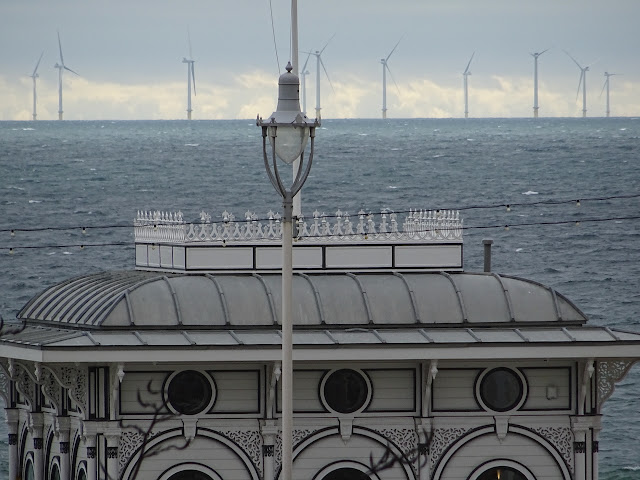This Saturday, Brighton & Hove City Council is launching - with entertainment, games and giveaways - a new visitor information hub inside the Brighton i360. Meanwhile, today in fact, there are some kind of shenanigans happening in and on the i360’s iconic half-mirrored pod
The visitor information hub is situated in the i360’s gift shop area on the lower seafront level, it will operate daily between 10:30 am and 5:00 pm and will be officially opened at midday on 27 September by Mayor Amanda Grimshaw. To mark the occasion, a family fun day including entertainment, games and giveaways is planned from 11 am to 4 pm. The hub is a joint effort between the Brighton & Hove Tourism Alliance, the i360 itself, and Visit Brighton.But what about these shenanigans? At first I noticed a lot of climbing equipment inside the resting pod, but a few minutes later the pod had risen to the upper terrace level where there were a dozen or more action men (I think they were all men) all wearing or holding climbing equipment and wearing ‘Secret Compass’ t-shirts. Some were climbing atop the pod, and fixing a long rope ladder, others were doing things inside the pod. The whole terrace was closed off, but I managed to stop one person on his way into terrace.
I asked, ‘what’s going on?’ His response was short and sweet, ‘I can’t tell you.’
‘But what is going on is very public,’ I insisted, ‘is there some kind of event later?’
‘I can’t tell you a thing,’ he repeated.
A secret company indeed.
My only clue was the company name on the t-shirts, and so I got googling. Secret Compass is an international company that specialises in expedition logistics, risk management and extreme filming support. Its presence could point to a number of possibilities: publicity stunts, installing equipment, or assisting with film work. But also it frequently supplies climbers, medics and technical riggers for work in hard-to-reach places, whether in remote mountains or on urban landmarks. In the past, for example, it has provided climbers and riggers for television shoots on London’s Shard and in the mountains of Afghanistan. Given its track record working with television and film crews, a media project seems the most likely explanation.
































.jpeg)

